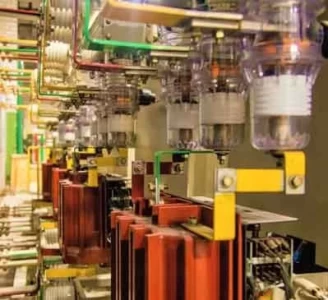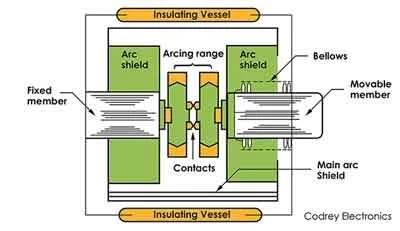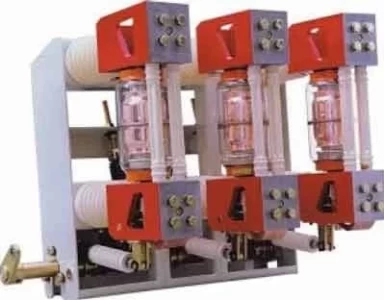The Role of VCBs in Aging Infrastructure
Vacuum circuit breakers (VCBs) are a cornerstone in the domain of electrical protection, offering significant benefits in terms of reliability, maintenance, and safety. As electrical infrastructure ages and the demand for modern, efficient, and safe systems increases, the integration of VCBs into existing networks becomes increasingly critical. These devices are renowned for their ability to break high-voltage circuits and ensure operational integrity in power systems.
Electrical grids around the world face a common challenge: much of the infrastructure has been in operation for decades, exceeding its originally designed lifespan. These aging systems struggle to meet increasing power demands reliably and often pose safety risks due to age-related deterioration. Circuit breakers, critical for protecting equipment and personnel, are a prime target for modernization efforts. Vacuum circuit breakers (VCBs) offer a technologically advanced solution, addressing numerous pain points of older circuit breaker technologies.
Key Advantages of Vacuum Circuit Breakers
- Enhanced Safety and Reliability: The core advantage of VCBs lies in their arc interruption mechanism. The vacuum environment within the interrupter provides superior dielectric strength, rapidly extinguishing arcs. This significantly reduces the risk of electrical faults, fires, and the associated hazards. Moreover, the sealed nature of VCBs protects internal components from dust, moisture, and environmental contamination, ensuring long-term reliable operation.
- Reduced Environmental Impact: Unlike older circuit breakers often utilizing SF6 gas (a potent greenhouse gas) for arc interruption, VCBs are environmentally responsible. Eliminating SF6 aligns with sustainability goals and reduces potential regulatory compliance burdens.
- Compact Design and Space Savings: The compact construction of VCBs often allows for direct replacement of older, bulkier circuit breakers with minimal modifications to existing switchgear. This is a major advantage in space-constrained retrofits.
- Superior Arc Interruption and Operational Life: The excellent dielectric properties of a vacuum lead to faster arc extinction with significantly less contact erosion compared to breakers operating in air or oil. This translates into extended service intervals and a longer operational lifespan for VCBs.
Advantages of Vacuum Circuit Breakers
VCBs are distinguished by their unique arc quenching mechanism, where the arc is extinguished in a vacuum chamber, significantly reducing the arc flash hazard. This feature makes them highly desirable for use in places where safety and space are of paramount concern. Furthermore, VCBs exhibit excellent dielectric recovery and high insulating strength, allowing for quick and reliable operations. They are also environmentally friendly, as they do not rely on any gas or chemicals that could potentially be released into the atmosphere.
Reliability and Maintenance
One of the primary advantages of VCBs is their reliability. The vacuum chamber effectively contains and extinguishes the arc, minimizing the wear on the circuit breaker and extending its operational life. This results in lower maintenance requirements and costs, as the frequency of replacements and repairs is significantly reduced. The absence of gas or oil in the breaking mechanism also eliminates the risk of leakage and contamination, which can affect the performance and longevity of other types of circuit breakers.
Modernization Needs and Challenges
The modernization of aging electrical infrastructure is a complex challenge. It involves upgrading or replacing old equipment with new technologies to improve system reliability, efficiency, and safety. VCBs play a crucial role in this modernization process, but their integration into existing systems is not without challenges.
Compatibility and Integration
One of the main challenges in integrating VCBs into aging infrastructure is ensuring compatibility with the existing equipment and systems. This may require significant modifications to the current setup, including changes in the switchgear layout, control systems, and protective relaying. Additionally, the existing personnel must be trained to operate and maintain the new technology effectively.
Cost Considerations
The initial investment for installing VCBs can be significant, especially when retrofitting them into an existing network. However, this cost is often offset by the long-term benefits of reduced maintenance requirements and improved system reliability. Decision-makers must carefully evaluate the return on investment, considering both the immediate costs and the long-term operational savings.
Performance and Technical Considerations
The performance of VCBs in electrical protection is superior in many respects. They are capable of interrupting fault currents rapidly and with minimal energy dissipation. This quick operation helps in reducing the stress on the electrical system and enhancing its stability.
Electrical Endurance and Mechanical Life
VCBs are known for their high electrical endurance and mechanical life. They can withstand a large number of operating cycles without significant degradation in performance. This endurance is crucial for systems where frequent operations are expected, such as in industrial applications or in networks with high levels of renewable energy penetration.
Conclusion
Vacuum circuit breakers are an essential component in modernizing aging electrical infrastructure, offering numerous benefits in terms of reliability, maintenance, safety, and environmental impact. While the integration of VCBs into existing systems presents certain challenges, such as compatibility and cost considerations, the long-term advantages they provide in improving system performance and stability are undeniable. As the demand for more efficient and reliable electrical systems continues to grow, the role of VCBs in electrical protection becomes increasingly significant, highlighting their importance in the journey towards modernization and sustainability.




